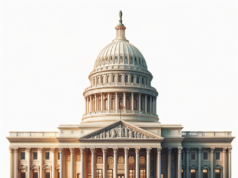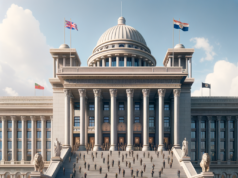In an era where rapid decision-making is crucial, the role of governors and their executive orders has become increasingly significant. These directives, often issued in response to emergencies or pressing societal needs, can have profound effects on the daily lives of citizens. From public health measures to economic regulations, governor’s orders shape the framework within which communities operate. This article explores the multifaceted impact of these orders, tracing their historical evolution, analyzing recent implementations, and considering future implications for governance.
Understanding the Role of Governor’s Orders in State Governance and Policy Implementation
Governor’s orders serve as a vital tool in state governance, allowing elected officials to enact policies swiftly and effectively. These orders can address a wide range of issues, including public health crises, natural disasters, and economic challenges. By bypassing the often lengthy legislative process, governors can respond to urgent needs with agility. This authority is grounded in state constitutions and laws, which grant governors the power to issue executive orders during emergencies or to implement policies that require immediate action. As such, these orders not only reflect the priorities of the administration but also shape the legal and operational landscape of state governance.
Historical Context: The Evolution of Executive Orders and Their Societal Implications
The use of executive orders dates back to the early days of the American republic, with presidents and governors alike employing this mechanism to implement policies and manage crises. Historically, executive orders have been pivotal in times of war, economic upheaval, and social change. For instance, President Franklin D. Roosevelt’s Executive Order 9066 during World War II authorized the internment of Japanese Americans, highlighting the potential for executive power to infringe on civil liberties. In contrast, more recent orders have aimed to expand rights and protections, such as those related to civil rights and environmental regulations. This evolution reflects a broader societal dialogue about the balance of power, accountability, and the role of government in addressing complex challenges.
Analyzing Recent Governor’s Orders: Key Areas of Impact on Public Health and Safety
In recent years, particularly in light of the COVID-19 pandemic, governor’s orders have taken center stage in public health and safety discussions. States implemented a range of measures, including mask mandates, vaccination requirements, and social distancing protocols, to mitigate the spread of the virus. These orders often sparked debates about individual freedoms versus collective responsibility, as citizens navigated the implications of such mandates in their daily lives. Additionally, governors have utilized their authority to mobilize resources, direct funding to healthcare systems, and coordinate responses among various state agencies. The effectiveness of these orders has been a focal point for public health officials and policymakers, as they strive to balance health imperatives with economic and social considerations.
Economic Consequences: How Governor’s Orders Influence Local Businesses and Employment
The economic ramifications of governor’s orders are profound, affecting local businesses and employment rates across states. Restrictions on gatherings, capacity limits in establishments, and temporary closures have led to significant financial strain for many businesses, particularly in the hospitality and retail sectors. Conversely, some orders aimed at economic recovery, such as stimulus measures and support for small businesses, have sought to mitigate these impacts. The interplay between public health directives and economic stability underscores the complexity of governance during crises, as governors must weigh the immediate needs of public safety against the long-term viability of the economy. As states emerge from the pandemic, the legacy of these orders will continue to influence economic policies and recovery strategies.
Public Response: Community Reactions to Governor’s Orders and Their Effectiveness
Community reactions to governor’s orders have varied widely, reflecting diverse perspectives on governance, individual rights, and public health. While many citizens have supported measures aimed at protecting public health, others have expressed frustration over perceived overreach and infringement on personal freedoms. Protests and public forums have emerged as platforms for citizens to voice their opinions, highlighting the tension between compliance and dissent. The effectiveness of these orders often hinges on public buy-in, as community adherence to health guidelines and regulations is crucial for their success. Understanding public sentiment is essential for governors and policymakers as they navigate the complexities of governance in a polarized environment.
Looking Ahead: The Future of Governance and the Continued Relevance of Executive Orders
As we look to the future, the relevance of executive orders in governance is likely to persist, particularly in an increasingly complex and fast-paced world. The lessons learned from recent crises will inform how governors approach their authority and the expectations of their constituents. There may be a push for greater transparency and accountability in the issuance of executive orders, as citizens demand a more participatory approach to governance. Additionally, the evolution of technology and communication will enable more efficient dissemination of information and facilitate public engagement in the decision-making process. Ultimately, the future of governance will hinge on the ability of leaders to balance swift action with democratic principles, ensuring that executive orders serve the public good while respecting individual rights.
In conclusion, governor’s orders play a pivotal role in shaping the landscape of state governance and public policy. Their historical evolution reflects the dynamic interplay between authority and accountability, while recent implementations highlight their profound impact on public health, safety, and the economy. As communities continue to navigate the complexities of governance, the effectiveness and public perception of these orders will remain critical to the ongoing dialogue about the role of government in addressing societal challenges. The future of executive orders will undoubtedly evolve, but their significance in shaping our lives today cannot be understated.




























































